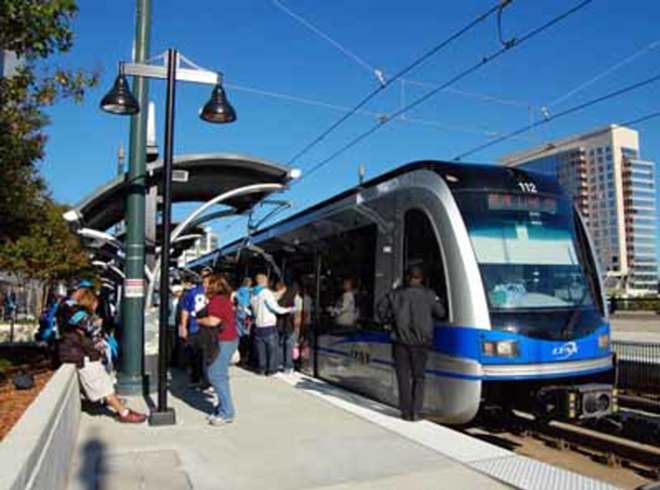
If you had told me even one year ago that the Hillsborough County Commission would vote unanimously to start the process of putting a 1-cent sales tax on the 2010 ballot to build a light-rail transit system, I would have laughed in your face.
But I'm not laughing today. Because that is exactly what the commissioners did last week, by a 7-0 vote, including the support of rail opponent and referendum naysayer Commissioner Jim Norman.
It appears we're finally getting mass transit. As in understanding mass transit. Because there is still a long way to go before we actually get such an urban amenity in this suburban corner of the world. Having voters in this fiscally conservative county actually approve the tax, perhaps at the tail end of the current recession, is not a done deal.
But the news that it is moving forward unimpeded (as yet) to the ballot shows a new maturity in Tampa Bay politics and a realization that things can't keep going the way they have been going for our growth, transportation and economy.
For Mayor Pam Iorio, who has made a light-rail system in Tampa her top priority, it was a positive sign.
"This was an important step," Iorio told me via e-mail. "There will be many steps along the way, but the important thing is that the Commission is moving the issue of light rail and transit forward."
There are lots of people — politicians, business leaders, civic activists, transportation experts — who deserve credit for nursing this idea along so far. But one of the most visible in the process has been County Commissioner Mark Sharpe, who surprised some in the audience last week when he moved to get the referendum rolling during a meeting that wasn't scheduled to see such an action.
Sharpe is a Republican, and a fiscal conservative. He was the local chairman for John McCain's presidential campaign. But when it comes to remaking Tampa Bay's transportation future, he is positively progressive. And excited.
"I really am surprised by the level of support that is broad," he said in an interview taped for my weekly podcast. "It's going to be a battle. There are those out there who say they're going to fight it. But we've got a good case."
The emerging plan for light rail would start with a line from USF to downtown Tampa, and likely then expand to reach Westshore's offices and shopping and then Tampa International Airport beyond that. From there, it would reach across the Howard Frankland Bridge to the beaches of Clearwater and north into Pasco's bedroom communities around Wesley Chapel. There are no set details or costs to such a system, and critics have pointed out how expensive (and money-losing) other rail projects have proven to be (see: South Florida's TriRail).
But the more hopeful among Tampa Bay's leaders, such as Sharpe, don't see failures but see successes in redefining urban space, like Charlotte has seen with the advent of its LYNX rail system, where stations were designed to serve and encourage higher-density construction.
But doesn't a Republican such as Sharpe catch a lot of grief from his party faithful on this issue?
"This is the point," Sharpe explained. "I think that the traditonal lines of Republican-Democrat, especially in local issues, a lot of things are changing. From my perspective, even though some folks at first didn't understand why would [I] be supporting mass transit, my response is because it is the smart fiscal thing to do. It makes a lot more sense financially.
"But also as well, I think we need to be thinking of a whole new ridership," Sharpe continued. "Perhaps today there are there are those today who say, Oh, I would never ride the rail line, or I would never rise the bus. But there are younger people who do. We've got to be able to speak to them and talk to a community of citizens who say, we like living in an urban setting, and with an urban settting you must have a layer of transit opporutnities."
And here is where Sharpe demonstrates the depth of his knowledge on how light rail can be transformative to an entire community. He gets the idea of using rail to help those who most likely wouldn't be directly served and would oppose spending their tax dollars: the suburban and rural voters.
"There are those who say, I love the suburbs. I love my rural community," he said. "A transit system also speaks to them as well, if for nothing else it might say, look at these established transit routes, these corridors we're establishing, They're away from you. You won't need to worry about a beltway going through your neighborhood or a road that you don't want, or even a rail line of some sort because we have now established, fixed locations where everyone will know this is where the growth is going to be."
The commissioner concluded: "This is really a smart thing."

